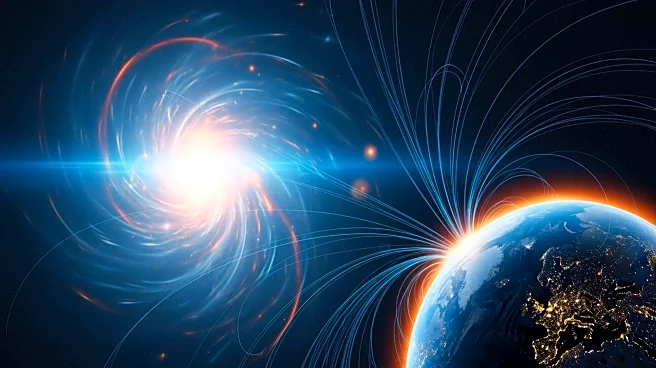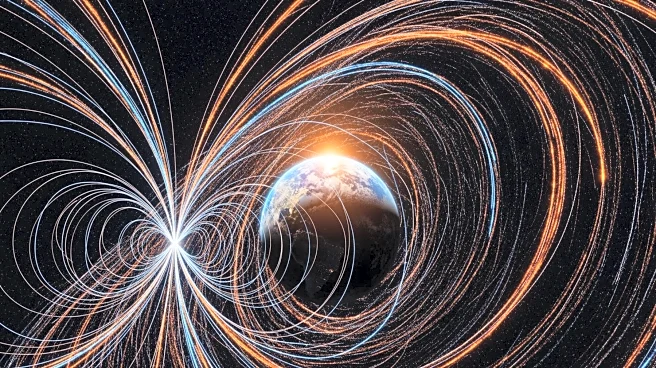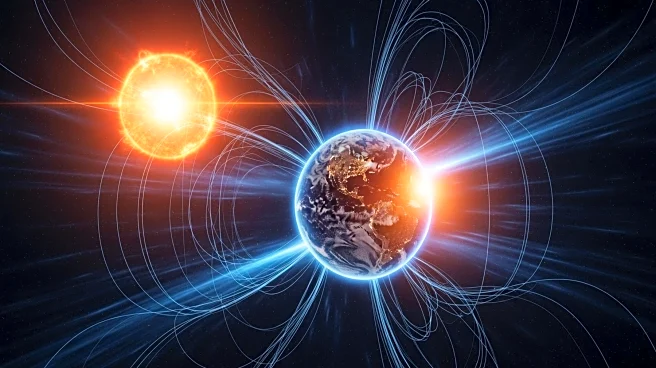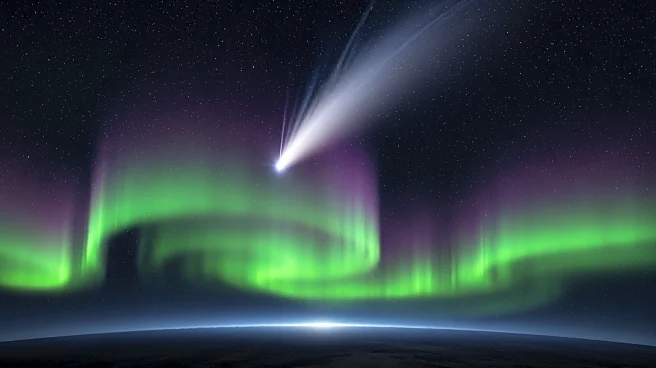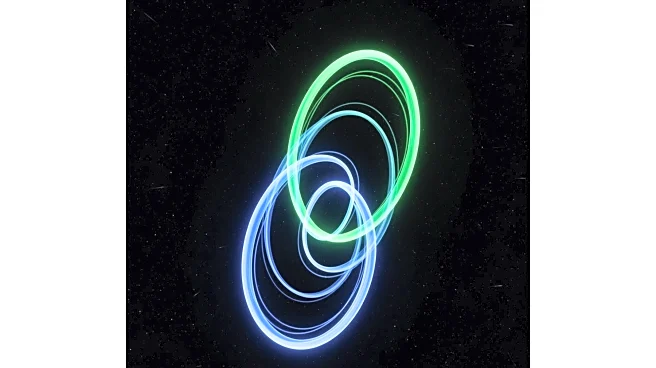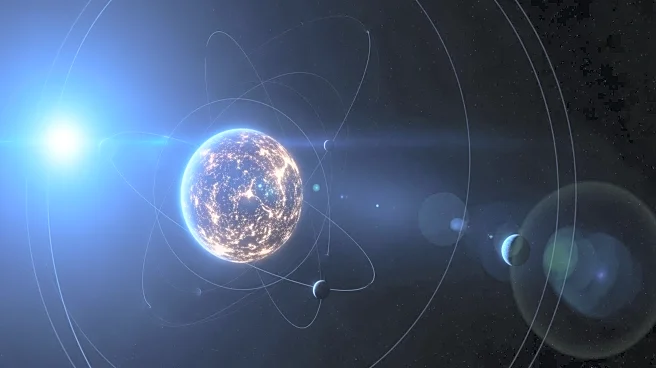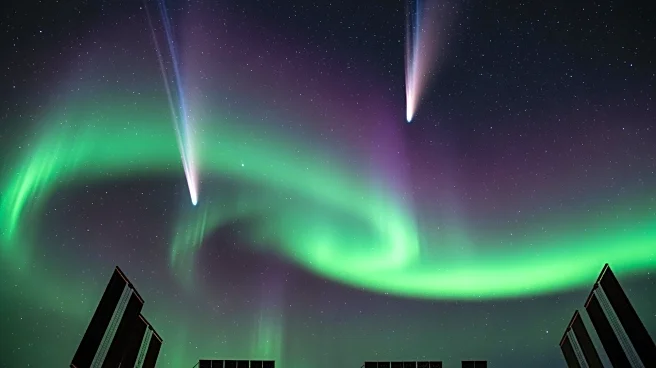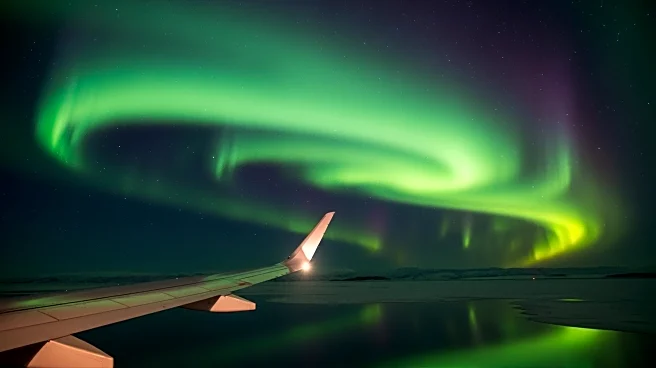What's Happening?
On November 20, 2025, Earth was struck by a stealth solar storm, detected by NOAA scientists. This rare event triggered auroras visible much farther south than usual, including in areas like Maine and
Denmark. Stealth solar storms, or coronal mass ejections (CMEs), are difficult to detect as they lack the usual signals like bright solar flares. The storm's subtle release of solar wind disturbed Earth's magnetic environment, creating spectacular auroral displays.
Why It's Important?
The stealth solar storm highlights the challenges in forecasting space weather events, which can impact satellite operations, communication systems, and power grids. The unexpected auroras demonstrate the potential for stealth CMEs to affect regions not typically prone to such phenomena. Understanding and predicting these events are crucial for mitigating risks to technology and infrastructure. The storm underscores the need for advanced monitoring techniques to detect and respond to space weather threats.
What's Next?
Scientists will continue to study stealth CMEs to improve detection methods and forecasting accuracy. Enhanced monitoring systems may be developed to better predict space weather impacts on Earth. Collaboration between international space agencies could lead to improved global preparedness for solar storms. Public awareness campaigns may be initiated to educate communities on the potential effects of space weather and the importance of preparedness.
Beyond the Headlines
The stealth solar storm reflects broader scientific challenges in understanding space weather and its impacts on Earth. The event highlights the need for interdisciplinary research to develop comprehensive models of solar activity and its effects. The storm's impact on auroras also offers opportunities for scientific exploration and public engagement, as skywatchers experience rare natural phenomena. The event may prompt discussions on the importance of investing in space weather research and technology.


